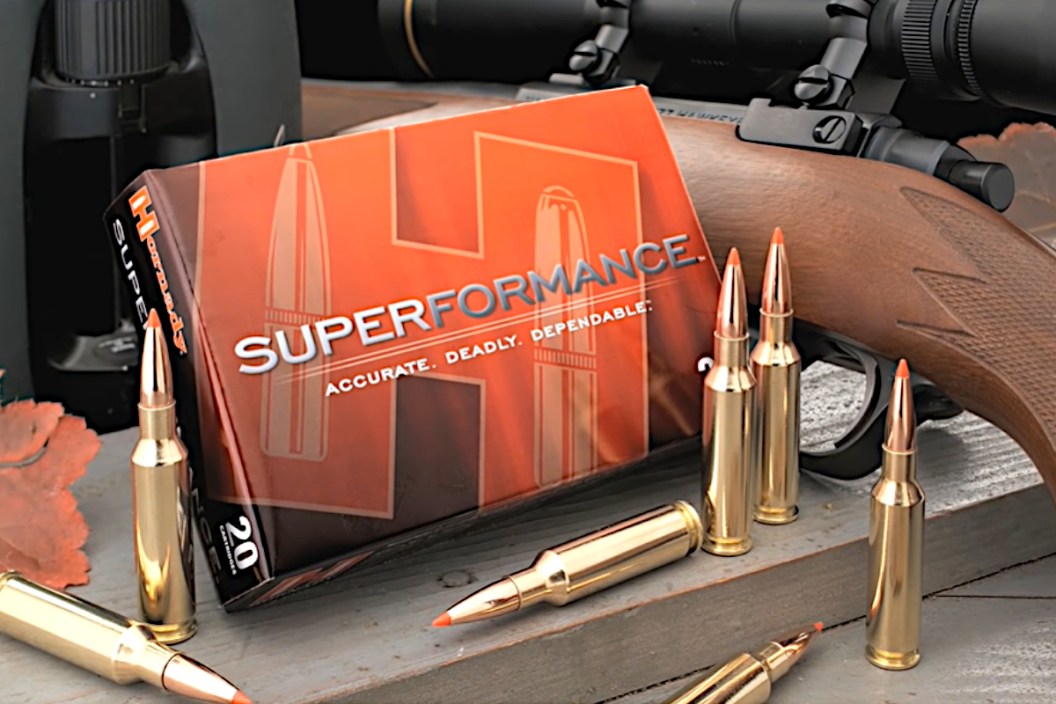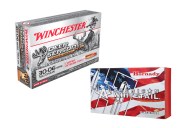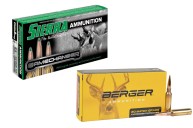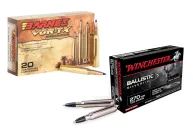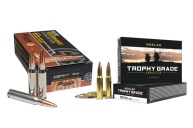Is the 6.5 Creedmoor really that good for big game hunting?
Perhaps no other round has taken the deer hunting world by storm quite like the 6.5 Creedmoor. Introduced in 2007 by Hornady, this hunting cartridge has gained something of a love-hate relationship with shooters. You either love the 6.5 Creedmoor or you hate it, depending on who you ask that day.
So, let's take a closer look at this rifle cartridge, how it fares for long range shooting, and how effective it is with big game animals like whitetail deer, antelope, and other medium-sized big game.
Along the way we will attempt to explain what makes hunting rifles in this caliber so popular. We will also attempt to answer some frequently asked questions about the capabilities of the round in general.
What is the 6.5 Creedmoor?
The first thing to know about 6.5 Creedmoor is it is a short action round and is nearly identical to the .260 Remington. The main difference is the engineers at Hornady improved the ballistic coefficient of the round, making the 6.5 a much faster round. It also means the round shoots extremely flat, which has helped it earn a legion of fans in western states who like to pursue pronghorn antelope and mule deer at extreme distances over 400 yards and beyond. It seems more and more hunters are picking up a Creedmoor rifle every hunting season because of this flat trajectory. For some hunters, it may even replace the round of choice for die-hard .308 Winchester fans.
Depending on the bullet weight and type of round used, most 6.5 rounds deliver between 1,400, and 1,500-foot pounds of energy to the target at 100 yards. More than enough for most coyote, hog, and whitetail hunting scenarios. At the same time, deer hunters have come to love the recoil of this round. The parent case of the Creed is a slightly necked-down .30 Thompson Center, and even the speedier rounds have a recoil many hunters compare to that of a classic .243 Winchester deer rifle. This means you can reach out to longer ranges without killing your shoulder. It also makes the 6.5 a favorite round for youth hunters.
What is the muzzle velocity of a 6.5 Creedmoor?
Back in 2007, some hunters dismissed the 6.5 as nothing more than a target shooting round. Mostly because there was nothing fancy about those earlier rounds. However, the muzzle velocity of this round is probably what kept people's interest and is a big part of why so many hunters are interested in it today. We have heard about some hunters being able to push the Creedmore to muzzle velocities of just over 3,000 fps. However, you should usually expect slightly less than that for most forms of factory ammo. Especially the premium hunting ammo. For example, the 129-grain InterLock American Whitetail round from Hornady has a blistering muzzle velocity of 2,820 fps from the muzzle which dips to just 2,615 fps at 100 yards and 2,419 fps at 200 yards. If we look at Hornady's "Full Boar" line, the 120-grain bullets do even better, 2,925 fps at the muzzle, 2,718 fps at 100 yards, and 2,519 fps at 200 yards.
Looking at another popular hunting ammo brand, Nosler, the 6.5 gets 2,900 fps from the muzzle with their 120-grain, ballistic tip rounds and 2,702 fps at 100 yards. With their Accubond long-range trophy grade ammo, expect 2,850 fps at the muzzle and 2,505 fps at 100 yards. Stepping things up to Nosler's 140-grain Spitzer Partition premium ammo shows 2,650 fps at the muzzle and 2,468 fps at 100 yards. We should also mention Hornady's 129-grain SST rounds, which deliver speeds of roughly 2,223 fps, and their 120-grain ELD-X Precision Hunter rounds which have proven extremely popular with hunters. Expect about 2,557 fps at 100 yards with those.
Just remember that some of the slower speeds you see with some of that premium ammo is for projectiles that are going to expand more and produce better blood trails. That is, if the first shot does not drop the animal outright. We should also mention that when you start really looking at the stats of these rounds, trajectory is one of the more noticeable things. In most cases, there is either zero loss of trajectory at 100 to 200 yards, or less than three inches of drop. For anyone who was not comfortable with shots of 100-200 yards in the past, the 6.5 offers an accessible way to start making better shot placement at these ranges without the need to adjust your aim point too much.
For what it's worth, some users report they can get slightly faster velocities and flatter trajectories from handloading their own ammo. Another benefit here is reloading your own ammo is also significantly cheaper with the 6.5 than some other rounds.
What other game can you hunt with the 6.5 Creedmoor?
While most people think of the Creedmoor as primarily a coyote and deer hunting round, hunters have successfully used this round on many different big game animals. Which is nice if you are hoping to sometimes hunt game other than deer without buying a new gun. Pronghorn antelope, mule deer, mountain goats, and sheep to name just a few. There are even some hunters who use them for elk and moose. Just remember shot placement is key when bringing down one of the larger animals. If you are not confident on threading such a small round through the vitals of a larger animal, it is probably time to start thinking about buying a larger gun.
We have heard of hunters using the 6.5 Creedmoor on safari in Africa. Obviously, you will not want to use it on dangerous game like the cape buffalo, but for oryx, elands, and the many mid-sized species of antelope that live there, it is more than enough to get the job done. Although as we've noted earlier, expect to do a little blood trailing in most circumstances. If it works on all these animals, it will function extremely well as a deer hunting round.
What are some disadvantages of the 6.5 Creedmoor?
Of course, we are not saying the 6.5 Creedmoor is a perfect hunting round for deer. Because what round is? There are a few things worth noting about this round if it is in your consideration for your next hunting rifle. For one, it is not the flattest shooting 6.5 out there. One can easily argue the 6.5 Precision Rifle (PRC) or the 6.5 Grendel outperform the Creedmoor in every aspect, but especially trajectory. However, these rounds may be slightly harder to find in stores than Creedmoor, which seems to have invaded everywhere.
Also, rounds like the .260 Remington or even a plain 6mm, are generally going to offer more fps in muzzle velocity from a traditional bolt-action rifle platform. This is mostly because the cases are slightly larger and there's just a little more powder in those rounds. If you are looking for consistent speeds over 3,000 fps, the 6.5 Creedmoor may not be it. And finally, as we have mentioned a few times before, this round is not known of its knockdown power like a .30-06 Springfield or other larger rifle. Most deer do not go far after being hit with this round, but a little trailing is not out of the norm. It's just something to remember, especially if you are hunting a smaller parcel and are worried about wounded game crossing borders to neighboring properties.
Is the 6.5 Creedmoor a good round for deer hunting?
While this round has many detractors, the proof is in the pudding at this point. The 6.5 Creedmoor is an excellent and effective deer hunting round. The ever-increasing popularity of the round only proves that. If you do not believe us on that, just look at how many 6.5 Creedmoor offerings the big rifle manufacturers like Savage, Browning, Ruger, Weatherby, and more offer. Almost every new rifle development these days includes the 6.5 Creedmoor as a standard new cartridge offering. This round may have its flaws, but it is also incredibly versatile not just for deer, but for a variety of big game animals. And it's that versatility, combined with the accuracy and speed of the round, that is going to keep this round popular with hunters for many years to come.
Products featured on Wide Open Spaces are independently selected by our editors. However, when you buy something through our links, we may earn a commission.
For more outdoor content from Travis Smola, be sure to follow him on Twitter and check out his Geocaching and Outdoors with Travis YouTube channels.
NEXT: THE AXIS DEER AND HOW THEY'RE IMPACTING PARTS OF THE UNITED STATES
WATCH
